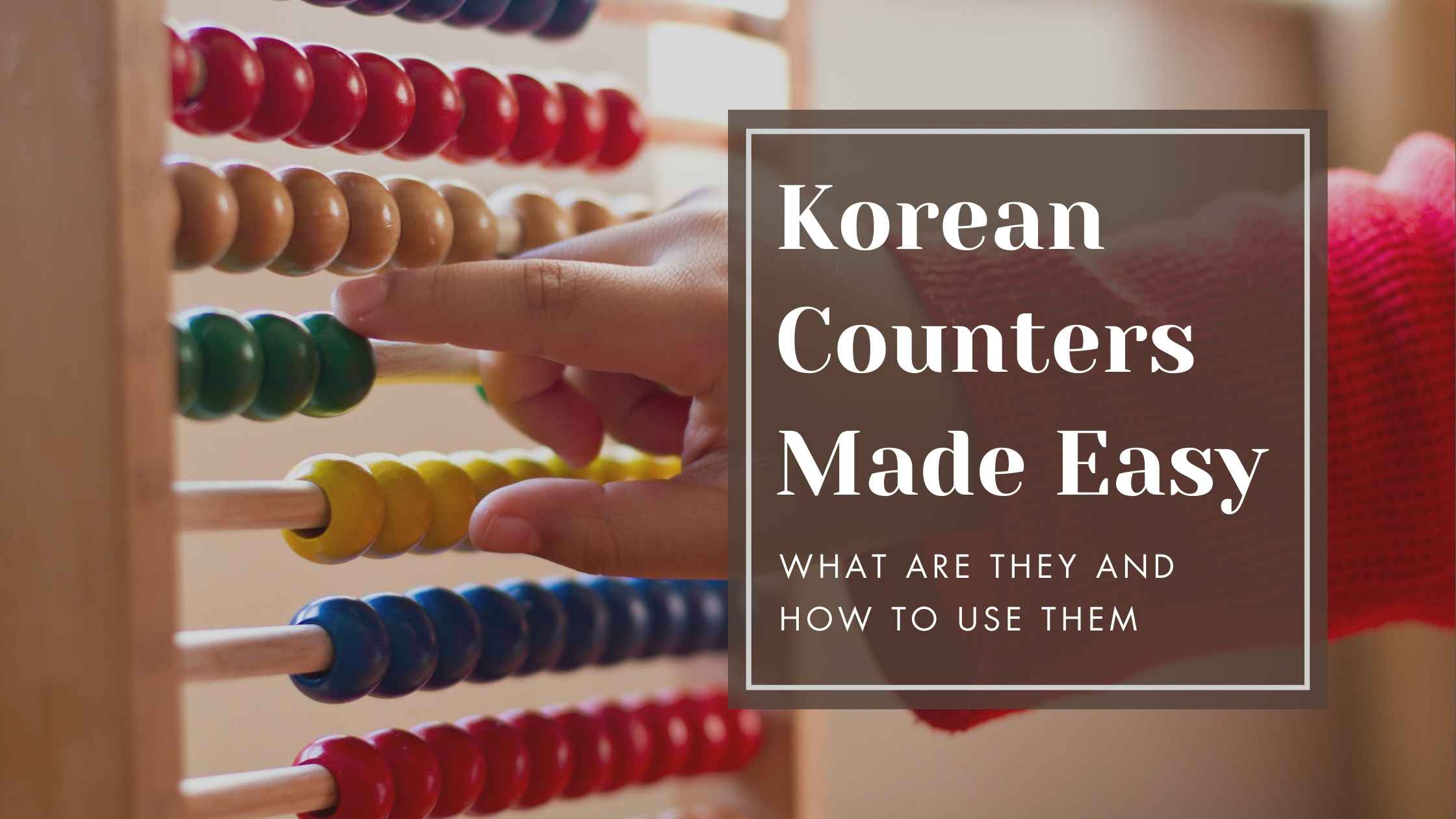If you’re learning Korean, you’ve probably come across phrases like:
- 사과 다섯 개 (five apples)
- 학생 두 명 (two students)
- 책 세 권 (three books)
And wondered: Why not just say “다섯 사과” or “두 학생”?
That’s because in Korean, you can’t just say a number in front of a noun. You need a counter word—a special marker that matches what you’re counting.
Let’s break down how Korean counter markers work and which ones you should know.
🧾 What Are Counter Words?
In Korean, when counting things, people, animals, or even abstract concepts, you need to use a counter word (also called a measure word).
Think of it like how we say “a pair of shoes” or “a slice of pizza” in English—but in Korean, this applies to almost everything.
🔢 How to Structure a Sentence with Counters
The typical structure is:
[Noun] + [Number + Counter]
예: 사과 다섯 개 → “Five apples”
예: 학생 두 명 → “Two students”
⚠️ When using Native Korean numbers, numbers 1–4 often get shortened:
- 하나 → 한
- 둘 → 두
- 셋 → 세
- 넷 → 네
So you say:
- 한 개 (not 하나 개)
- 세 명 (not 셋 명)
 📚 Common Korean Counter Words
📚 Common Korean Counter Words
Here are some of the most frequently used counters every learner should know:
| Counter | Used For | Example |
| 개 (gae) | General items (things) | 사과 다섯 개 (5 apples) |
| 명 (myeong) | People (informal) | 학생 세 명 (3 students) |
| 분 (bun) | People (honorific/formal) | 손님 두 분 (2 guests) |
| 마리 (mari) | Animals | 고양이 네 마리 (4 cats) |
| 권 (gwon) | Books, notebooks | 책 한 권 (1 book) |
| 병 (byeong) | Bottles | 물 두 병 (2 bottles of water) |
| 잔 (jan) | Cups/glasses of drinks | 커피 한 잔 (1 cup of coffee) |
| 대 (dae) | Vehicles, machinery | 차 세 대 (3 cars) |
| 장 (jang) | Flat items (paper, tickets) | 종이 한 장 (1 sheet of paper) |
| 벌 (beol) | Sets of clothes | 옷 두 벌 (2 outfits) |
| 송이 (song-i) | Flowers, bunches (grapes) | 꽃 세 송이 (3 flowers) |
| 그루 (geuru) | Trees | 나무 네 그루 (4 trees) |
| 층 (cheung) | Floors (of a building) | 5층 (오 층) – 5th floor |
| 시 (si) | Hours (clock time) | 네 시 (4 o’clock) |
| 분 (bun) | Minutes (clock time) | 십오 분 (15 minutes) |
| 초 (cho) | Seconds | 삼십 초 (30 seconds) |
| 살 (sal) | Age (informal) | 스물한 살 (21 years old) |
| 세 (se) | Age (formal) | 이십일 세 (21 years old) |
📌 Tips for Using Counters Correctly
- Always use the appropriate number system.
- Most counters use Native Korean numbers.
- Some (like 분, 초, 층) use Sino-Korean numbers.
- Word order can vary.
- Both 책 세 권 and 세 권의 책 are grammatically correct.
- The first form is more natural in conversation.
- Context matters.
You can often omit the noun if it’s already understood:- Q: 사과 몇 개 있어요? (How many apples are there?)
- A: 다섯 개 있어요. (There are five.)
- Honorifics matter.
- Use 분 instead of 명 when referring to people respectfully.
- Example: 교수님 두 분 (2 professors)
 🧠 Practice Examples
🧠 Practice Examples
| English | Korean |
| 2 bottles of soda | 사이다 두 병 |
| 3 cats | 고양이 세 마리 |
| 1 book | 책 한 권 |
| 5 people (formal) | 다섯 분 |
| 4 floors | 사 층 (Sino-Korean) |
| 7 flowers | 꽃 일곱 송이 |
| 3 cars | 차 세 대 |
🎯 Final Thoughts
Using Korean counters correctly is key to sounding natural and fluent. While it might seem like a lot to memorize at first, most counters are tied to logic (cars, animals, people, flat objects, etc.). Focus on the most common ones, and practice using them in everyday phrases.
Once you get the hang of it, counters become second nature—and you’ll never say “five apple” again!




